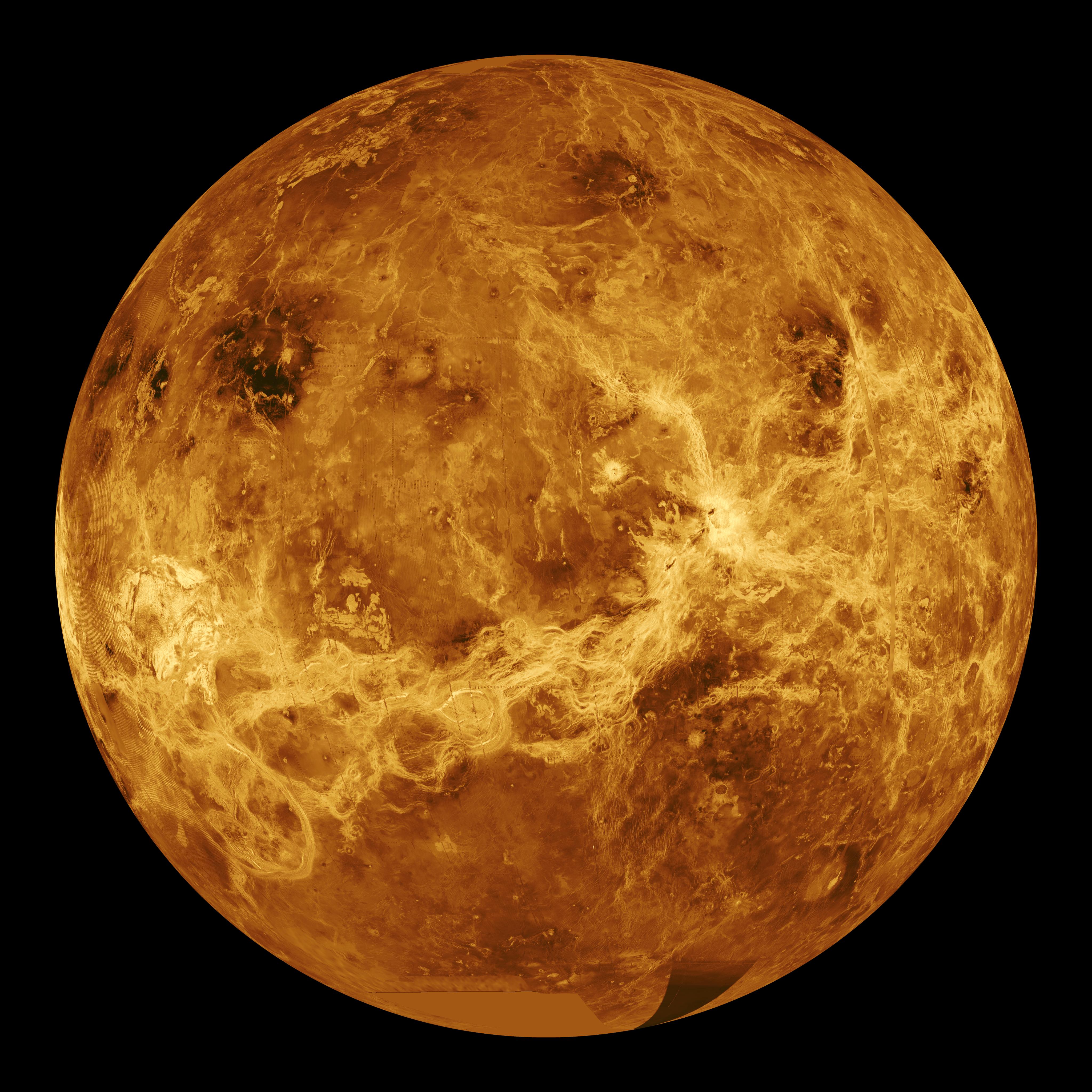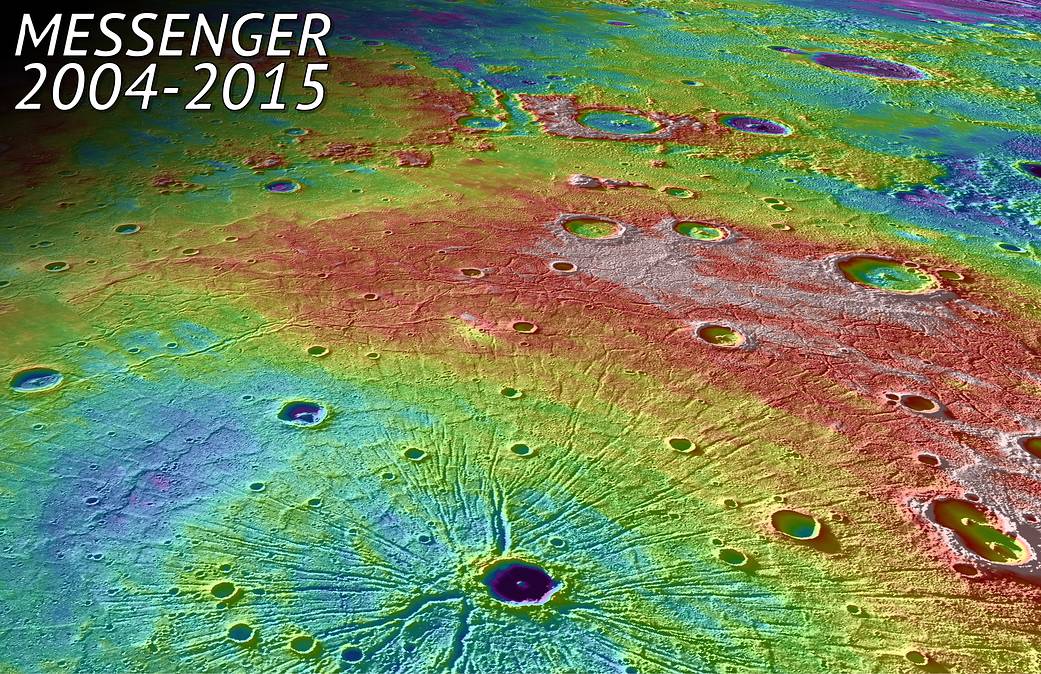Instrument: Mercury Dual Imaging System (MDIS) and Mercury Laser Altimeter (MLA)Approximate Center Latitude: 33.7° NApproximate Center Longitude: 158.7° EScale: Apollodorus crater is approximately 41 km (25 miles) in diameterOf Interest: In this perspective view, we look northwest over the Caloris Basin, a depression about 1500 km in diameter formed several billion years ago by the impact of a large projectile into the surface of Mercury. The mountain range at the edge of the basin can be seen as an arc in the background. In the foreground, we see a set of tectonic troughs, known as Pantheon Fossae, radiating from the center of the basin outward toward the edge of the basin interior. A 41-km-diameter impact crater, Apollodorus, is superposed just slightly off from the center of Pantheon Fossae. White and red are high topography, and greens and blues are low topography, with a total height differences of roughly 4 km. The MESSENGER spacecraft was launched in 2004 and ended it’s orbital operations yesterday, April 30, 2015, by impacting Mercury’s surface. Background image texture is provided by the Mercury Dual Imaging System (MDIS) instrument while color corresponds to surface elevation data obtained from the Mercury Laser Altimeter (MLA) experiment, with both draped over a digital elevation model derived from MLA altimetric data. As the first spacecraft ever to orbit Mercury, MESSENGER revolutionized our understanding of the Solar System’s innermost planet, as well as accomplished technological firsts that made the mission possible. Check out these movies of the Top 10 Science Results and the Top 10 Technology Innovations from the mission, as well as this image highlights collection from the mission.Credit: NASA/Johns Hopkins University Applied Physics Laboratory/Carnegie Institution of Washington/Goddard Space Flight Center
2 min read
























